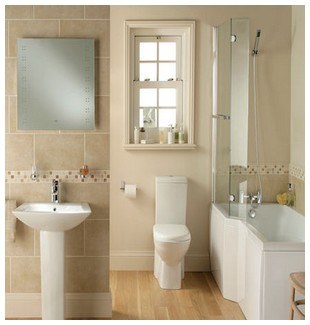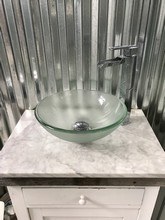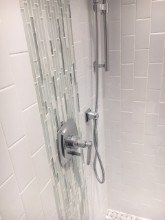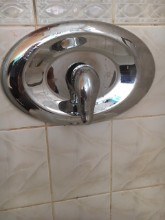Plumbing Fixture Installations & Repairs (Sinks/Bathtubs/Showers/Toilets)
Maintenance & Repairs
Clogs, Leaks, Cracks... A lot can go wrong with common Plumbing Fixtures. Do-It-Yourself projects can get pretty sketchy once you introduce plumbing into the equation. Even if it seems like a simple fix, the chances of accidentally flooding your home just aren't worth the risk. Whatever your plumbing need, big or small, our Licensed, Professional Plumbers are just a phone call away.
We're Just a Phone Call Away!
908-281-7101

Replacements & Installations
With Decades of Experience Installing and Replacing Plumbing Fixtures of all Styles, Brands and Sizes, We can help you get the products you love into your home, safely, dependably, and in accordance with local codes. Proper Installation of your sinks, toilets, showers and tubs can prevent a lot of future problems. Rely on Jersey Plumbing Service for all of your fixture installations.
24 Hour Emergency Services
Jersey Plumbing Service is dedicated to your comfort and daily necessities. Our experienced technicians continue to train and educate themselves on the best and newest technologies in plumbing. Keep your home protected by quickly replacing failed Plumbing Fixtures, or maintaining and repairing your current Plumbing Fixture.
Proudly Serving the Following Counties in New Jersey:

Union

Hunterdon

Mercer

Somerset

Essex

Middlesex

Morris
Common Problems With Showers, Sinks and Tubs
Clogged Drains and The Problems that Come With Them
A clogged Bathtub drain should be a simple fix, however, it's a fix that should not be put off, as clogged drains can lead to a host of larger problems, from health, to structural.
Strong Odors - Blocked drains lead to stagnant water, wich can result in mold and that ever-pleasant "musty" smell that mold gives off. Even the less toxic molds can give off odors that cause headaches and uncomfortability.
Pests - Stagnant water is an attraction to a variety of pests. Roaches, flies, and mosquitos are just a few of the critters and creatures that will be drawn to any sitting water within the home.
Health Issues - The mold and bacteria that result from stagnant water in clogged drains often exacerbate existing problems in a person’s health such as asthma or COPD, and chronic health issues can develop in otherwise healthy people when those things enter the atmosphere of your home.
Structural Damage - Stagnant water around clogs can cause pipes to leak and break down. The water can soak into the foundation and corners of the home, weakening the structural integrity of the home, as well as get into the walls and ceilings, causing damage to drywall, insulation, and potentially causing a large mold problem.
Leaky Pipes and Fixtures
A Bathtub that drips one drop of water per second will waste 5 gallons of water a day and 2,082 gallons per year. That's your best case scenario. If your leak is in the pipes, you could be looking at a ton of structural damage. The second you become aware of the leak, you'll want to get moving on repairs before the costs balloon.
Low Water Pressure
In some cases, especially with a new home purchase, you might discover you have low water pressure throughout the house. This may be the result of a regulator installed to limit the force of water from the municipal supply. If one of these valves exists, it may need to be set to a different setting.
Another potential cause for low water pressure in your fixture could be your hot water heater. If you aren't noticing house-wide water pressure issues, pay attention to the water throughout the house on the 'hot' setting specifically. If you notice that you're losing pressure just on the hot setting, that's a good indicator that your water heater needs to be looked over by a plumber.
Common Toilet Problems
Toilets that Clog Repeatedly
Foreign Objects - It's amazing how many people will flush non-toilet paper down the toilet. If you're experiencing repeated clogs, there is a good chance someone in your family is flushing: paper towels, tampons, q-tips, prophylactics, baby wipes, or other objects down the toilets. Make sure you have a talk with the members of your household, young and old about what goes into the toilet. (Toilet paper or tissues.) And what doesn't (Everything Else.)
Flapper Position- The flapper opens up to allow water from the tank to flush the toilet. If, for some reason it isn't opening all of the way, you may not get enough water into the bowl to properly flush.
Blocked Plumbing Vents - Toilet drains vent out through your roof. These often become clogged by birds nests or other debris. If you are hearing gurgling in your drains, or drains have a lot of odor coming up through them, there is a good chance your problem is a clogged vent.
Object in the Trap - While a plunger will push most things down the drain, if something like a toy or a toothbrush end up wedged in the S-Curve of the pipe, it will continue to collect debris and clog your toilet.
Sewer Line Obstructions- Sewer lines may become clogged, or damaged by tree roots. This can cause backups in the toilet.
Older Low Flow Toilets - When low-flow toilets first came out, there were a lot of design flaws. Newer Low Flow Toilets have good flushing power, but the older ones can fall short of the job. It may be time to swap out for a newer model, or simply to remain friendly with your plunger.
Leaky Seals & Wax Rings
There are about 5 separate locations where your toilet seals can fail and leak. Most of these can be repaired with simple tightening or replacing of the seal. The largest fix is the wax ring at the base of the toilet. If you see water around the base of the toilet and you've eliminated all of the other locations as a cause for the leak, the toilet will have to be lifted from the floor and the wax ring replaced.
Phantom Flush
Is your tank mysteriously refilling - as though someone had just flushed? This is a sign that your tank is leaking water. To confirm this, you can drop some food coloring in the tank. If your toilet bowl changes color as well, you need new flapper.
Disappearing Bowl Water
Two things may be causing your bowl water level to change after filling. If you notice that you have the normal amount of water in the bowl - only to find later that most of it has disappeared, it's possible that there is a partial clog of toilet paper soaking up the water. The other less common possibility is that there is a crack in the colon or piping of the bowl. If this is the case, you will need to replace the toilet bowl.
Whistling Tanks
Does your toilet make a lot of noise when filling? Older toilets with ball cock valves will close slowly as the water level drains, causing suction noises as the water drains. A new toilet tank fill valve that stays open entirely until flushing is completed will eliminate the noise.
Disappearing Bowl Water
Two things may be causing your bowl water level to change after filling. If you notice that you have the normal amount of water in the bowl - only to find later that most of it has disappeared, it's possible that there is a partial clog of toilet paper soaking up the water. The other less common possibility is that there is a crack in the colon or piping of the bowl. If this is the case, you will need to replace the toilet bowl.



